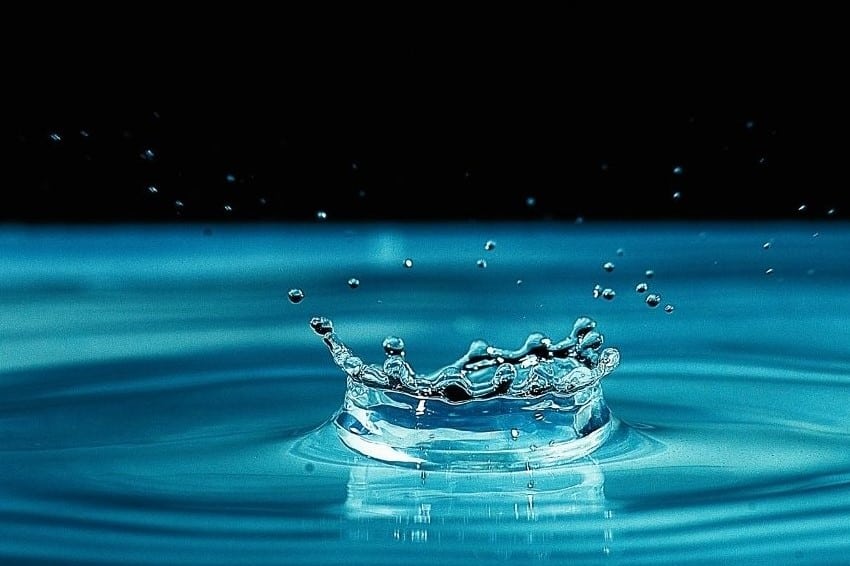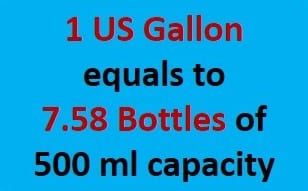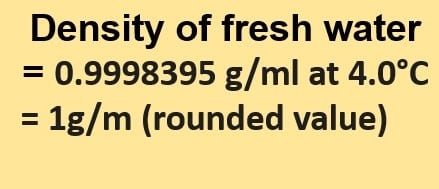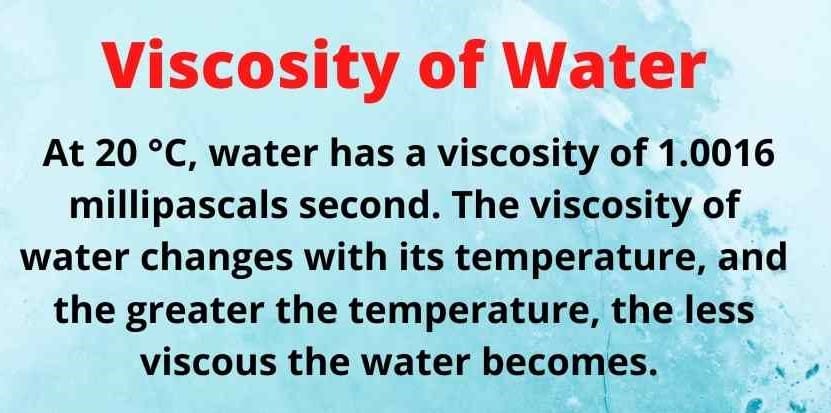Ideally, the pH of distilled water is 7, making it neither acidic nor alkaline. However, distilled water is extremely environmentally sensitive due to its high purity, and even a trace amount of carbon dioxide from the air can cause it to become slightly acidic. Therefore, the pH reading of distilled water can range between 5.5 and 6.9 depending on how long it has been exposed to air. Because distilled water has had all of its salt removed during the distillation process, it has a very low buffer capacity.

| the ph of distilled water | between 5.5 and 6.9 |
| Chemical nature of distilled water | Neutral substance in terms of acids & base |
| Melting point & boiling point of distilled water | Similar as water |
| Conduction of electricity | non-conductor of electricity |
| Uses of Distilled water | Used to make solutions in the laboratory that have a precisely known composition Used in batteries so additional minerals wouldn’t be added to the battery cells and potentially plate out onto the anodes and cathodes. Used inside of boilers, heat exchangers, on turbine blades so that dissolved minerals aren’t deposited Good for use in homemade cosmetics and medicaments |
Table of Contents
How to Measure the pH of Distilled Water?
To measure the pH of distilled water, you can follow these steps:
- Make sure your pH meter or pH test strips are calibrated according to the manufacturer’s instructions.
- Rinse the electrode or strip it with distilled water to remove any residual contaminants.
- Collect a sample of distilled water in a clean container.
- Immerse the pH electrode or dip the pH test strip into the distilled water sample.
- Wait for a few seconds for the reading to stabilize.
- If you are using a pH meter, read the pH value on the display. If you are using pH test strips, match the colour of the strip to the corresponding pH value on the package or colour chart.
- If the pH value is not within the expected range of 7.0 (neutral), there may be some dissolved impurities in the distilled water. You can try filtering the distilled water through activated carbon or reverse osmosis to remove any impurities that may affect the pH reading.
- Rinse the pH electrode or strip it with distilled water after use and store it according to the manufacturer’s instructions.
Real-Life Examples of Distilled Water
| No. | Significance of Distilled Water in Real Life | Use Case Description |
| 1 | Medical and laboratory applications | Used to prepare solutions, dilute medications, and clean laboratory equipment. |
| 2 | Car batteries | Used to fill car batteries as it does not contain any minerals or impurities that could damage the battery. |
| 3 | Steam irons | Used in steam irons as it does not contain any minerals or impurities that could clog the iron’s steam vents. |
| 4 | Humidifiers | Used in humidifiers to prevent mineral buildup that can cause damage to the humidifier and release impurities into the air. |
| 5 | Cooling systems | Used in cooling systems, such as air conditioning units and car radiators, to prevent mineral buildup that can cause blockages and damage the system. |
| 6 | Aquariums | Used in aquariums to provide a pure environment for aquatic life, as it does not contain any minerals or impurities that could harm fish and other aquatic creatures. |
| 7 | Cleaning and hygiene | Used for cleaning and hygiene purposes, such as washing fruits and vegetables, as it is free from contaminants and impurities. |
| 8 | Cosmetics | Used in the production of cosmetics as it is free from impurities and ensures that the final product is of high quality. |
Can the pH of Distilled Water Change?
- Yes, the pH of distilled water can change over time.
- Freshly distilled water has a pH of 7 (neutral).
- The pH can decrease over time if the distilled water absorbs carbon dioxide (CO2) from the air, forming carbonic acid (H2CO3).
- The rate of pH change depends on factors such as the amount of carbon dioxide in the air, temperature, and surface area of the water.
- If the distilled water is stored in a sealed container, it can maintain its neutral pH for an extended period as it is not exposed to the air and cannot absorb carbon dioxide.
- Distilled water is still considered one of the purest forms of water available and is often used in laboratory and industrial applications that require a neutral pH.
Distillation of Water
The process of distillation removes nearly all ionic, mineral, and organic impurities, making it one of the purest forms of water available. However, just because it is labelled as purified water does not imply that it is pure H20. Distilled water actually has a slightly acidic pH. This is due to the fact that when distilled water comes into contact with air, carbon dioxide gas dissolves in it, resulting in a dilute solution of carbonic acid. This is also why demineralized water, a type of purified water, reacts poorly with metals such as steel.
The pH of very pure distilled water that has had little contact with air will be slightly lower than 7, usually 6.9. However, this does not imply that distilled water is acidic. Its acidity is very slight, as evidenced by the fact that normal rainwater has a pH of around 5.6 and is still safe to touch.
Concept of pH of a Solution
The pH scale measures the concentration of hydrogen ions in a solution. The decrease in hydrogen content is indicated by an increase in pH. This demonstrates that the pH scale is the inverse of the negative logarithm of hydrogen ion concentration. A pH of 7 is perfectly neutral. A solution with a pH of less than 7 is considered acidic, while one with a pH of greater than 7 is considered basic alkaline. The further the reading deviates from 7, the more acidic or alkaline it is.
Factors Affecting ph of Distilled Water
- The temperature has an effect on pH readings because as the temperature rises, so does the ionization of water. As a result, the concentration of hydrogen ions rises, making the pH more acidic.
- When water comes into contact with air, CO2 gas begins to dissolve it, resulting in the formation of carbonic acid (H2CO3). As a result, the pH is less than seven.
The pH of distilled water
Deionized or distilled water lacks a strong ionic presence. Measuring the pH of distilled water can be difficult because there aren’t enough ions in the solution for the pH electrode to function properly. As a result, the pH of distilled water is not always accurate. A few drops of potassium chloride (KCL) added to the solution could be one solution. Because KCL is an ionic compound containing K+ and Cl-ions, its presence in water makes it more conductive. Adding KCL to the distilled water does not affect the reading, but it makes it more stable and likely to produce more reliable results.
Why Distilled water is more expensive?
Distilled water is obtained by heating water to its boiling point, then collecting the steam produced and condensing it back into the water, yielding clean water with no dissolved particles. It is the clearest water available.
The distillation process requires energy, which costs money, which is why distilled water is more expensive than tap water or reverse osmosis water.
Reverse osmosis water is produced by forcing water through a permeable membrane, and it produces water with very few dissolved solids.
Is distilled water good to drink?
It is safe to drink distilled water. However, distilled water lacks vital minerals such as calcium, salt, and magnesium, which give tap water its distinctive flavour. Drinking only distilled or low-mineral water leaves a flat flavour that many people find unpleasant, resulting in decreased water consumption.
What is the pH of fresh water?
The pH of pure water is 7. Water with a pH of less than 7 is acidic, whereas water with a pH of greater than 7 is said to be basic. Surface water systems typically have a pH range of 6.5 to 8.5, while groundwater systems have a pH range of 6 to 8.5.
Difference between distilled and deionized water
| Deionized Water | Distilled Water |
|---|---|
| Removes ions, and charged non-organic particles from water | Removes the majority of contaminants through boiling and re-condensing |
| Filtered before using reverse osmosis (RO) system to remove extra contaminants | Removes pollutants other than ions, effectively eliminating almost all minerals, many chemicals, and the vast majority of microorganisms |
| Leaves a trace of ionized minerals for the DI system to eliminate | Does not guarantee the removal of all contaminants, especially if the water contains volatile organics and other impurities |
Distilled Water Quality Standards
There are several ASTM and EU/Dutch standards for measuring distilled water quality. Here are a few examples:
| Standard | Description |
|---|---|
| ASTM D1193 | Standard Specification for Reagent Water: Outlines the requirements for reagent water used in chemical and microbiological testing. Includes requirements for conductivity, pH, and total organic carbon (TOC) levels. |
| ASTM D5127 | Standard Guide for Ultra-Pure Water Used in the Electronics and Semiconductor Industries: Provides guidance on the production and use of ultra-pure water in the electronics and semiconductor industries. Includes requirements for the removal of various contaminants, including ions, organics, and particles. |
| European Pharmacopoeia (Ph. Eur.) | Includes monographs on various types of water used in pharmaceutical production, including distilled water. Monographs include requirements for purity, conductivity, and pH levels. |
| Dutch Standard NEN 6257 | Specification for distilled water: Outlines the requirements for distilled water used in laboratory applications. Includes requirements for pH, conductivity, and various chemical and microbiological impurities. |
Summary
- Ideally, the pH of distilled water is 7. However, distilled water is rarely 100% pure.
- Normally, the pH value of distilled water may range between 5.5 and 6.9, depending on how long the water has been exposed to air.
- The pH value of distilled water changes with the rise in temperature and exposure to carbon dioxide present in the air.
- Distilled water lacks calcium, salt, magnesium, and other useful minerals.
Related Links
Thermal Conductivity of Water
Boiling of Water| Phenomenon, and Factors Affecting
Cubic Foot of Water Weight
Frequently Asked Questions
1. How do you define acid and base?
The Bronsted-Lowry Theory of acids and bases defines an acid as a compound that releases free protons in water. A base, on the other hand, is a compound that accepts protons. Hydrochloric acid and sodium hydroxide are two examples of strong acids and alkalis.
2. Specific gravity of water?
Specific gravity is defined as the ratio of a material’s density to that of water at 4 °C (where it is most dense and is taken to have the value 999.974 kg m-3). As a result, it is a relative quantity with no units.
The specific gravity of water is 1 at 4 degrees Celsius.
3. kinematic viscosity of water?
The kinematic viscosity of water at 20 °C is about 1 cSt.
Kinematic viscosity is a measure of how difficult it is for a fluid to flow when it is subjected to gravity. It is calculated by measuring how long it takes a specific amount of fluid to pass through a capillary in a calibrated and temperature-controlled viscometer.
4. Why water is a polar molecule?
Water is an example of a polar molecule.
A Water molecule is made up of two hydrogen atoms linked to one oxygen atom. The big oxygen atom has a stronger attraction to electrons than the tiny hydrogen atoms.
5. Does water cause weathering or erosion?
Water causes weathering. After a rock has been broken down, a process known as erosion carries the rock and mineral fragments away. Check the full article “weathering vs erosion“.
6. is water a pure substance?
Water is a pure substance, a hydrogen–oxygen compound. Although water is the most abundant substance on the planet, it is rarely found in its pure form in nature.
Please check the full article “Is water a pure substance?”.
7. viscosity of water?
The viscosity of water at 20 degrees Celsius is 0.01 poise r 0.001 Pa.s (Pascal seconds).
Exam Related Questions
- What is the purpose of using distilled water in car batteries?
Answer: Distilled water is used in car batteries because it does not contain any minerals or impurities that could damage the battery. Using tap water can cause mineral buildup, which can shorten the life of the battery.
- What is the significance of using distilled water in laboratory applications?
Answer: Distilled water is used extensively in laboratory applications because it is free from impurities and is an excellent solvent. It is used to prepare solutions, dilute medications, and clean laboratory equipment.
- Why is it important to use distilled water in steam irons?
Answer: It is important to use distilled water in steam irons because it does not contain any minerals or impurities that could clog the iron’s steam vents. Using tap water can cause mineral buildup and reduce the efficiency of the iron.
- What is the purpose of using distilled water in aquariums?
Answer: Distilled water is used in aquariums to provide a pure environment for aquatic life, as it does not contain any minerals or impurities that could harm fish and other aquatic creatures.
- Why is distilled water preferred over tap water in cosmetic production?
Answer: Distilled water is preferred over tap water in cosmetic production because it is free from impurities and ensures that the final product is of high quality. Using tap water can introduce contaminants and impurities into the cosmetic product.
More Interesting Topics
Weight of water
Density of water
Density of water g/ml
Surface Tension of Water
How Many Water Bottles is a Gallon
Physical and Chemical Properties of Water
How Much is a Liter of Water?
Disclaimer
Whatsinsight.org‘s blog and everything published on it are provided solely as an information resource. The blog, its authors, and affiliates accept no responsibility for any accident, injury, or damage caused by following the information on this website, in part or in whole. We do not recommend using any chemical without first consulting the manufacturer’s Material Safety Data Sheet and following the safety advice and precautions on the product label.
- BCl3 Lewis Structure in four simple steps - November 1, 2023
- PH3 Lewis Structure in four simple steps - October 8, 2023
- PF3 Lewis structure in four simple steps - September 24, 2023



